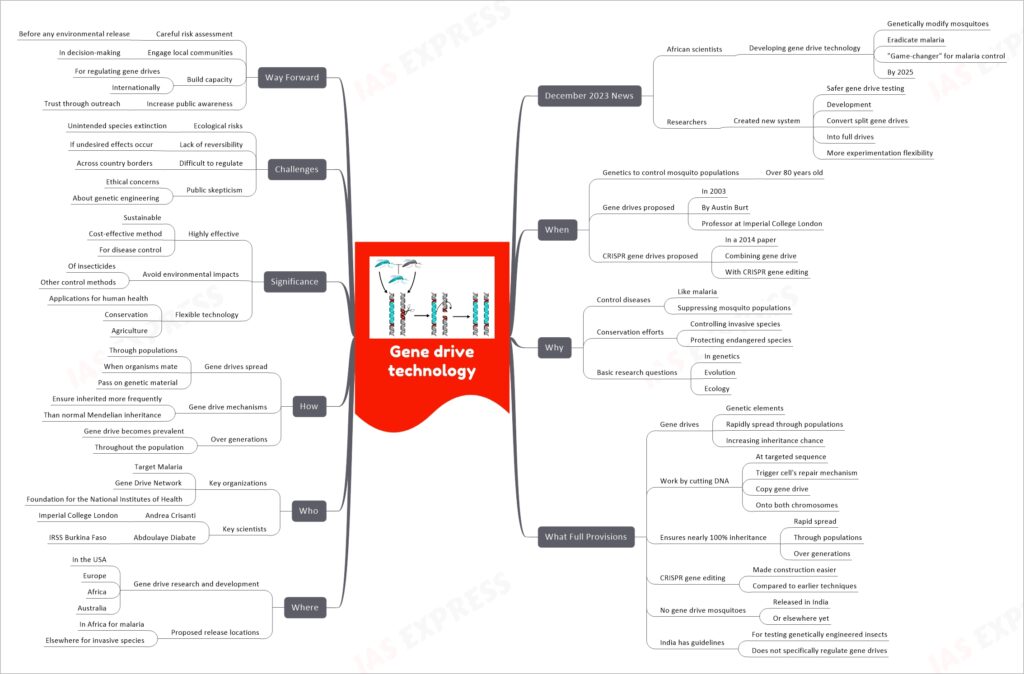Gene drive technology

Summary: Gene drive technology is a method of genetic engineering that allows specific genes to spread rapidly through a population. This technology, which can override natural selection, is made possible by the gene editing tool CRISPR-Cas9. Gene drives can be used to control disease-carrying insects like mosquitoes, potentially eradicating diseases like malaria. However, the technology also poses significant ecological risks, including the possibility of unintended species extinction. Therefore, it’s crucial to conduct thorough testing and risk assessment before deploying gene drives. Additionally, public engagement and clear regulation are necessary to address ethical concerns and skepticism about genetic engineering. As of December 2023, gene drive research and development are ongoing in various parts of the world, including the USA, Europe, Africa, and Australia

